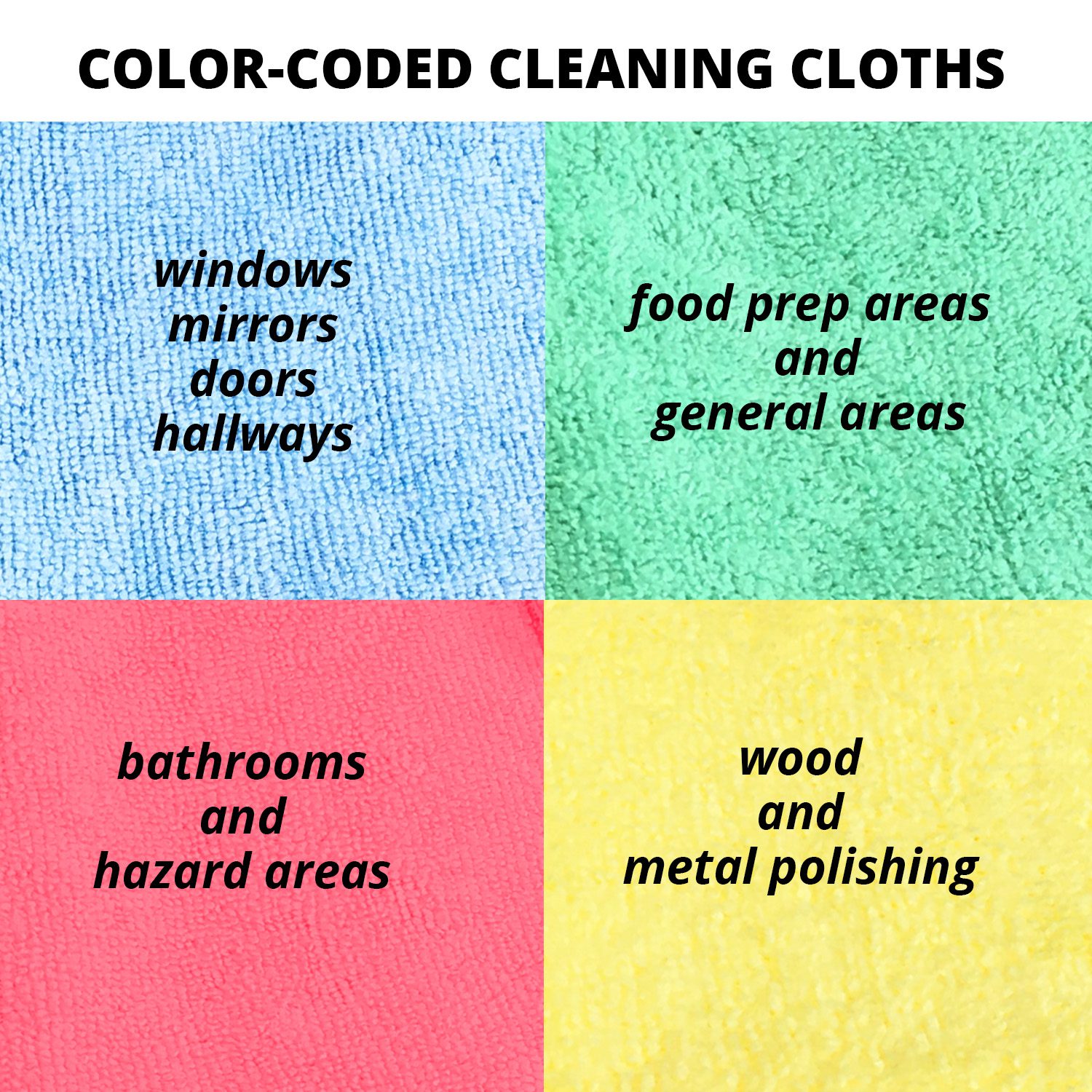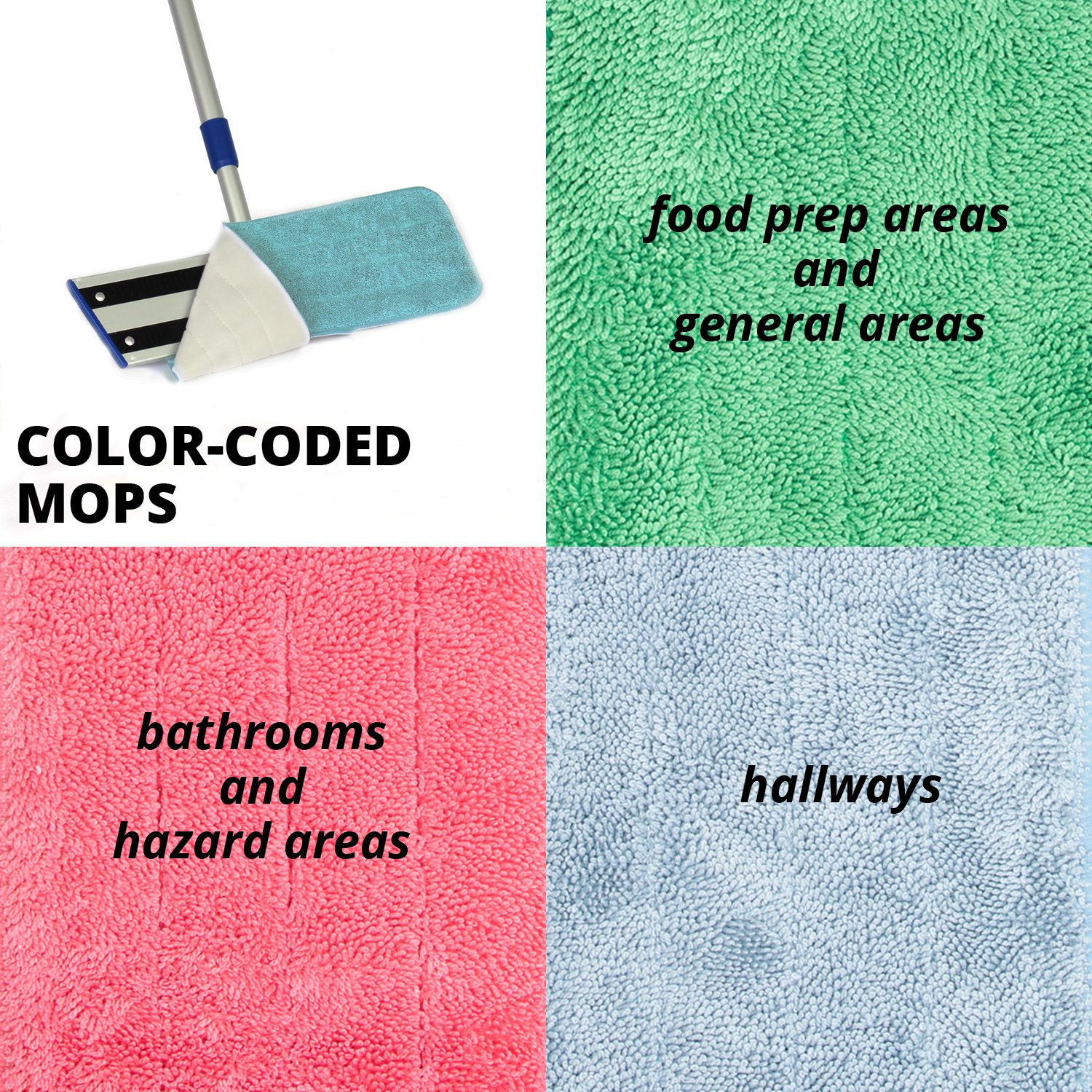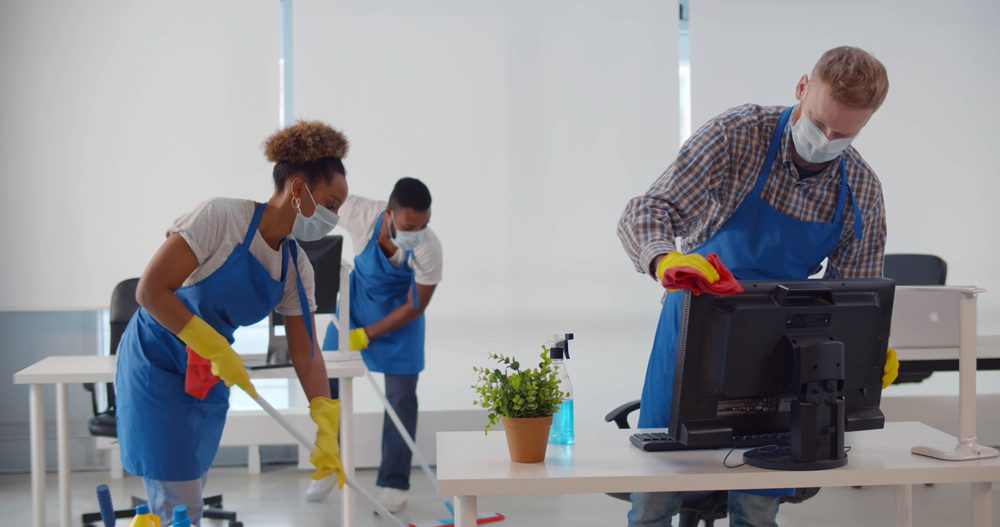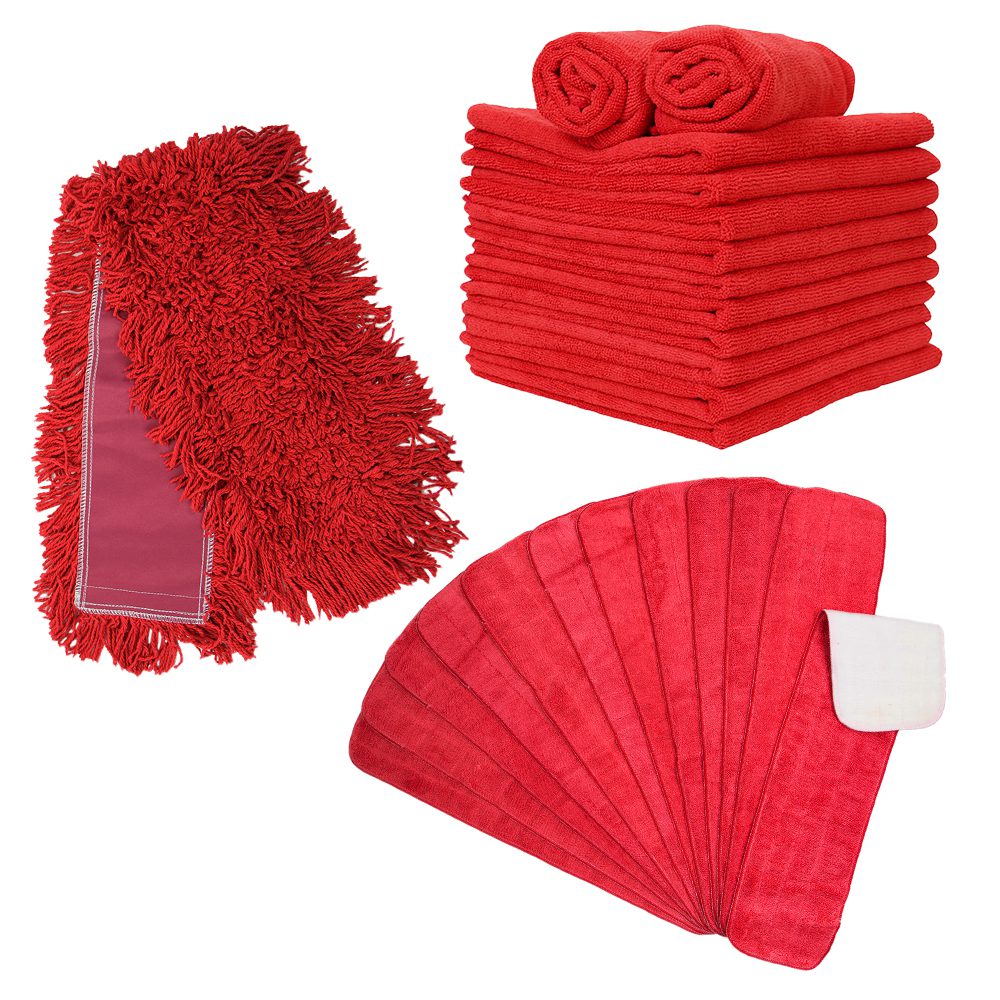Why Design Color-Coded Cleaning Systems?
One shouldn’t underestimate the importance of a color-coded cleaning system. When you institute this simple but effective strategy for housekeeping supplies, you can take some important steps to prevent cross-contamination, control infections, and make it easy for your employees to meet higher expectations for cleaning standards.
The basic theory is simple: use specific color microfiber cloths, mops, and pads for each type of surface area.
Does it sound too simple? Does it seem like something you may have trouble getting your crew to use?
Many companies have faced similar issues, but this is one of the most effective ways to ensure germs don’t spread around a facility and cause problems.











